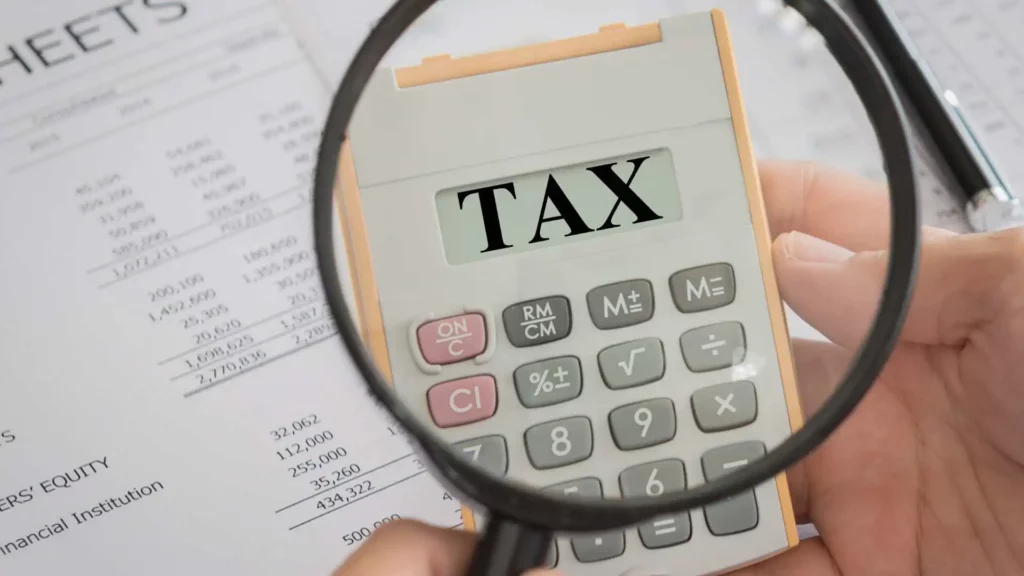Getting that rejection notice from the IRS can feel like a tax season nightmare. But don’t panic; we are here to help. Most rejected returns are fixable; you can likely get your refund flowing again without hassle.
We’ll crack the case of your rejected return together, helping you understand the common culprits (math errors, missing info, even software glitches!), decipher the cryptic rejection codes, and navigate the steps to fixing it.
We will cover deadlines, resubmission options, and where to find help if you get stuck. Remember, millions of taxpayers face this every year, and with a bit of detective work and this guide, you’ll be back on track to refund town in no time!
What Happens If Your Tax Return Is Rejected?
Receiving an IRS rejection notice can be confusing and unsettling. However, it’s crucial to remember that this happens to many taxpayers every year and doesn’t signify an insurmountable problem.
The most common reasons behind a rejected return include missing or incorrect information. Even simple math errors or income reporting can trigger a bounce. In rare cases, identity theft might be the culprit, requiring immediate action like contacting the IRS and credit bureaus. Occasionally, technical glitches with software or duplicate filings can result in rejection.
The key to understanding the specific reason lies in the information provided in the rejection notice, including error codes. Remember, most rejections are fixable with careful review, detective work, and prompt action.
Feel free to seek professional help or contact the IRS directly if you need clarification. While a rejected return might seem like a roadblock, it’s often just a bump that can be overcome with the right approach.
Why The IRS Might Reject Your Return?
Here’s why the IRS might reject your tax return:
Filing status faux pas: Using the wrong filing status (single, married, head of household, etc.) is a common reason for rejection. Double-check the status you selected, based on your marital situation and household details.
Dependency dilemma: Improperly claiming dependents, whether children, relatives, or others you support, can raise red flags. Ensure you meet all the qualifying rules for each dependent you claim.
Deduction doubts: The IRS scrutinizes deductions closely. Forgetting to include proper documentation or inflating deduction amounts could lead to rejection. Keep meticulous records and receipts.
Credit conundrums: Tax credits can be tricky, especially for education, childcare, or earned income. Ensure you qualify and have the necessary paperwork to substantiate any credits claimed.
Employment errors: Issues with reporting income, whether from multiple jobs, self-employment, or other sources, can cause mismatches with IRS records and trigger rejections.
State snafus: If you live in a state with income taxes, errors on your state return could impact your federal filing, leading to an IRS rejection.
Deadline drawbacks: Make sure you meet the filing deadline or extension dates to avoid an automatic rejection. Your return will be rejected even if it is otherwise accurate.
Signature slip-ups: A missing signature, whether yours or your spouse’s – if filing jointly – is an easy-to-miss detail that can derail your return.
What Are Some Common Reasons For a Tax Return To be Rejected?
Let’s look into the possible reasons for your return bouncing back:
The missing link: This is the prime suspect. Did you forget to sign your form, leaving the IRS hanging? Maybe a typo snuck into your Social Security number, like writing ‘8’ instead of ‘3’. You may have forgotten to attach a crucial form, like that pesky Schedule D for investments, leaving them incomplete. Even seemingly minor omissions can trigger a rejection, so double-check those details.
Math mayhem: We all make mistakes, but the IRS will spot them in your return without fail. Whether it’s a simple addition error in your deductions or a more complex miscalculation in depreciation, any discrepancy throws their algorithms into a tizzy and leads to a rejection. Remember, accuracy is critical. Double-check those numbers as if your future depends on them (because it does!).
Identity theft spook: While these instances are relatively uncommon, a rejected return could signal potential identity theft. This can be scary, but remember, the IRS will never request personal information through email or text. If you suspect this, act fast – report it to the IRS and credit bureaus immediately to protect yourself.
Software glitches: Technology isn’t perfect, and even tax software can have occasional hiccups. These might lead to errors in your return, resulting in rejection. If you used software and suspect this, consider seeking professional help to double-check everything and ensure it’s error-free.
Outdated or duplicate data: Did you accidentally submit the same return twice, causing confusion? Or maybe you used outdated forms or software that the IRS no longer recognizes? Such technical inconsistencies can lead to rejection. Think of it like using an expired coupon – it just won’t work. Ensure you use the latest forms and filing methods to avoid this pitfall.
Verification woes: Sometimes, the IRS might need to verify certain information on your return, like income or dependents. If they can’t do so easily, they might reject your return and request additional documentation. This isn’t necessarily a bad thing, just a speed bump in the process.
Check out Beem Tax Calculator for free to get a quick and accurate estimate of your federal and state tax refund.
What Happens After My Tax Return Is Rejected?
Decipher the rejection: The tax agency (like the IRS) will send a detailed notice explaining why your return got bounced. This ‘rejection code’ is your key to understanding the issue, be it missing information, calculation errors, or outdated forms.
Fix the flaws: Based on the rejection code, gather any missing information, correct errors, and meet the filing requirements you missed. Remember, this might involve updating personal details, revising income/deductions, or attaching necessary documents.
Resubmit and wait: Follow the agency’s instructions. If possible, resubmit electronically for faster processing. Otherwise, get ready to mail it in. Be patient – it usually takes some time for them to review your corrected return.
Keep an eye out: Hopefully, your revised return sails through! But if issues persist, you will receive another notice outlining what needs to be fixed. Feel free to seek help from tax professionals or the agency to navigate the process smoothly.
How Do I Fix a Rejected Tax Return?
While we can’t offer specific financial advice, we can guide you on some general steps to fixing a rejected tax return.
The key to fixing your return lies in understanding the reason for rejection. Look for the rejection code or error message in the notice you received. It should pinpoint the area causing the issue, like missing information, math errors, or incorrect filing formats.
Based on the reason, collect any missing documents or information needed to rectify the error. This might involve double-checking your Social Security number, attaching forgotten forms, or correcting income and deduction amounts.
Make the corrections on your original return, or use tax software to prepare a corrected one. Ensure you address all the issues identified in the rejection notice. Once you’ve fixed the errors, resubmit your return following the instructions provided by the tax agency. Consider using electronic filing for faster processing. Otherwise, mail it in with any required documentation.
Is There a Deadline For Correcting a Rejected Tax Return?
While most rejections are fixable, timing is critical. Here’s the lowdown on correcting your return without missing deadlines:
If you filed electronically, you typically have five business days from the rejection notice to resubmit your corrected return electronically. Phew, not too bad! But remember, some states might have different timeframes, so double-check their rules.
Did you file via mail? You usually have more time, often until the original filing deadline (including extensions), to fix your return. But don’t sit back; act fast to avoid delays.
Missing the electronic resubmission deadline means going old-school – paper filing. It’s a slower process and can delay your refund. Avoid this tardy process by acting swiftly!
This is just a general overview. Your specific deadline is in the rejection notice, so read it carefully. It might differ based on your location or the reason for rejection.
Read related blog: What Happens If I Don’t Report Crypto On My Taxes?
Conclusion
Multiple avenues can help you out of this sticky situation. Tax agencies like the IRS offer resources to guide you through deadlines and resubmissions. Websites, helplines, and even online tools can decipher error codes and explain procedures.
Consider seeking help from tax professionals. With a proactive approach and understanding of the process, you can fix your rejected return and get your refund on track. They can navigate deadlines, offer tailored advice, and ease the stress of fixing your return.
You can also choose to file your taxes with Beem. Estimate your Federal and State taxes with Beem. Enjoy hassle-free tax filing with our 100% accuracy and get the maximum refund.






























